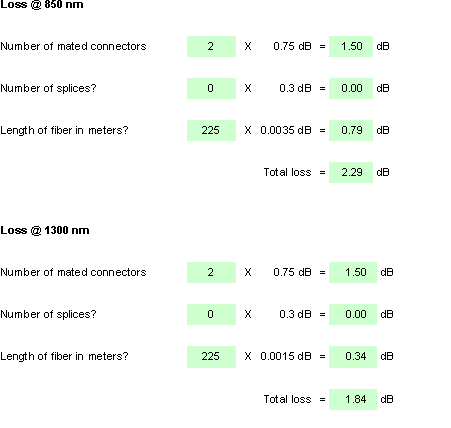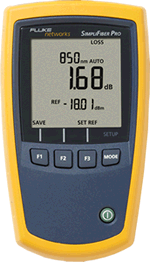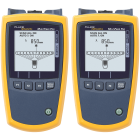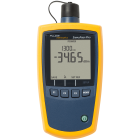Fiber Optic Link Loss Budget Calculation - SimpliFiber Pro
After measuring the loss of a fiber link, you now have to determine if that fiber link loss is acceptable or not. You can either compare this loss value to the application requirement or calculate the expected loss based on how many connectors and splices are in the link along with the length of the fiber link and the wavelength being measured. It's not has difficult as it sounds!
Before you start your fiber optic link loss budget calculation, you need to know the minimum acceptable loss values. These can be found in ANSI/TIA/EIA-568-C.3 and ISO/IEC 11801:2002.
| Mated connector pair |
0.75 dB |
| Splice |
0.3 dB |
| Multimode fiber | 3.5 dB per km @ 850 nm |
|
1.5 dB per km @ 1300 nm |
|
| Singlemode fiber | 1.0 dB per km @ 1310 nm |
|
1.0 dB per km @ 1550 nm |
|
| Outside plant (TIA Only) | 0.5 dB per km @ 1310 nm |
| 0.5 dB per km @ 1550 nm |
These are the minimum requirements. Be aware that fiber specifications typically contain tighter values. For instance, 0.5 dB per mated connector and 3.0 dB per km @ 850 nm. Please ensure you review your technical specification to see if it deviates from the values found in the cabling standards.
Let's take an example using the value from the standards:

The easiest way to do this is to fill in the tables below:

Let's compare that with our result from the SimpliFiber Pro. Note how SimpliFiber Pro measures both wavelengths at the same time. With other meters, it's a two step process.

The values shown here are less than our calculated fiber optic link loss budgets above. This fiber optic link meets our specification. A spreadsheet is available to download as an aid in calculating optical loss budgets. Use this fiber loss calculator in excel and calculate your fiber link loss










